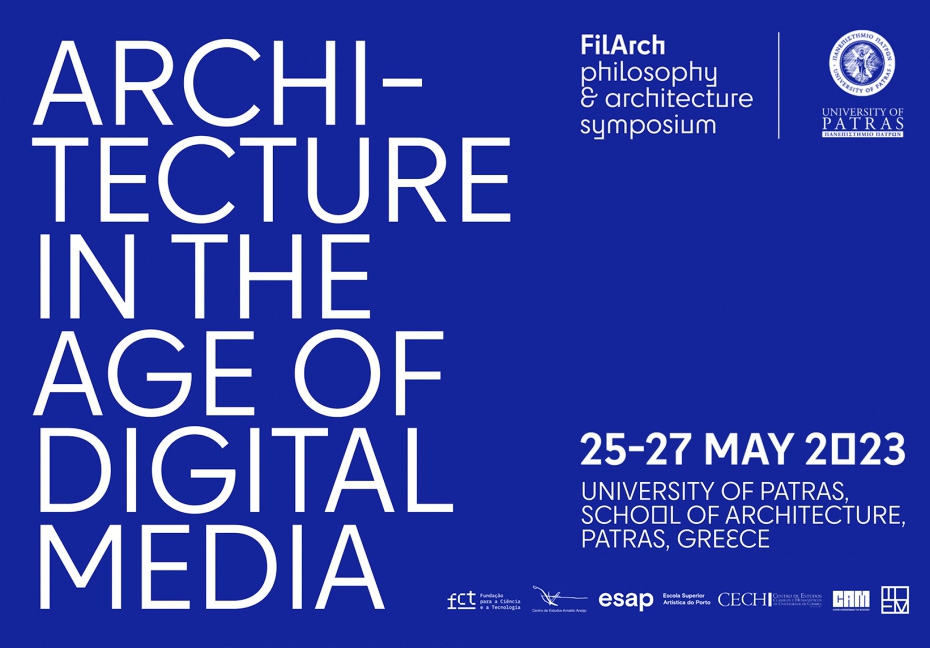Filarch 2023 Symposium
Title: "Architecture in the age of digital media"
Location: Department of Architecture, University of Patras.
Date: 25-27 May 2023
The programme of the Symposium can be found at the documents attached.
Digital media, software interface used by computers, prevail today in all types of visual communication that provide information or services, including architecture. Digital media allow complex calculations and forms to be created using computer algorithms, leaving to the designer the role of selection among a series of options, a fact that has ignited deba- tes regarding creativity, human agency, relea- sing control of the design process to software, curvilinearity, expressionism, computing infor- mation, all kinds of virtual space and the role of technology in society. Digital design combined or not with artificial intelligence has resulted to a vast expansion of the creative sphere, espe- cially towards what Greg Lynn calls animate form, which is contrary to the ethics of statics in all visual arts, dedicated as they are to eternal stasis and permanence. This desire for timelessness in architecture is intimately linked with interests in formal purity and autonomy, Lynn contends, whereas digital design favors multimedia and hybrid forms. Challenging architecture by introducing models of orga- nization which are not inert does not threaten its essence but advances its scope. Advancing systems of dynamic digital organization in architecture alters the abstract space of design from a neutral set of Cartesian coordinates to a space defined by force and motion, as in naval, airplane or automobile design where the properties of flow, turbulence, viscosity and drag are taken into account. Animate design is defined by the co-presence of motion and force at the moment of formal conception. Buildings like sculptures are designed with the cultural expectation to last forever when in fact they persist only for a limited period of time. Rather than designing for permanence, techniques for obsolescence, dismantling, ruination, recycling and abandonment through time, warrant exploration. Likewise, the functional fixity, stability as well as vertical develop- ment in architectural conventions are notions that ought to be questioned when it comes to outcomes like buildings. Architecture engaging with digital design is obliged to incorporate factors of time and motion and via experimen- tation with non visual regimes permeated by transformation and deformation, architects may discover how to engage time and motion in design.
The profound transformation that digital media have introduced in design has resha- ped the architectural modes of production that have been roughly stable for the last five centuries and has deeply shaken the discipli- nary foundations of architecture. Digital media have blurred the distinction between original and copy and have challenged the traditional notion of authorship. Furthermore, images have become poorer, as Steyerl argues, by losing resolution and by becoming endlessly ripped, accelerating through the web in the form of immaterial presence of temporary binary code translations, as May contends. An increasingly faster internet and digital social media pla- tforms offer an alternative sense of space and time, instant gratification mechanisms, fostered by a neoliberal economy that, as Pasquinelli claims, transforms every subject into a digital entrepreneur of a Neofeudal society.
FILARCH 2023 is about the effects that the “digital turn” has had in architecture and how digital media have transformed the way we conceive, think, discuss, produce, build, interpret, consume and define architecture.
More informations at the FilArch website

